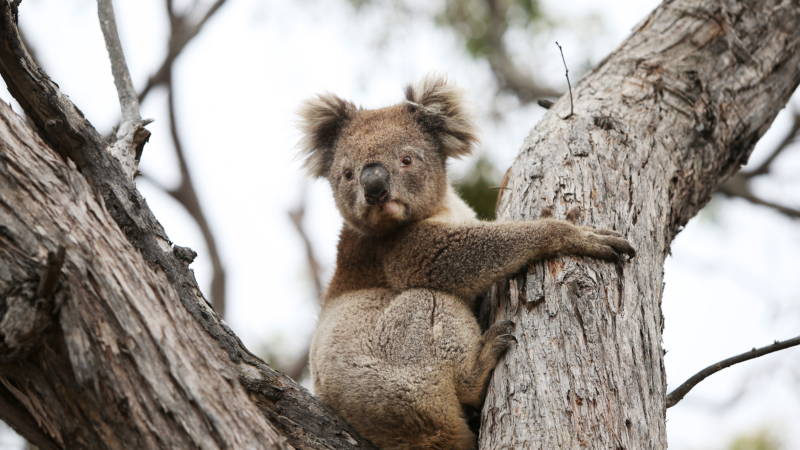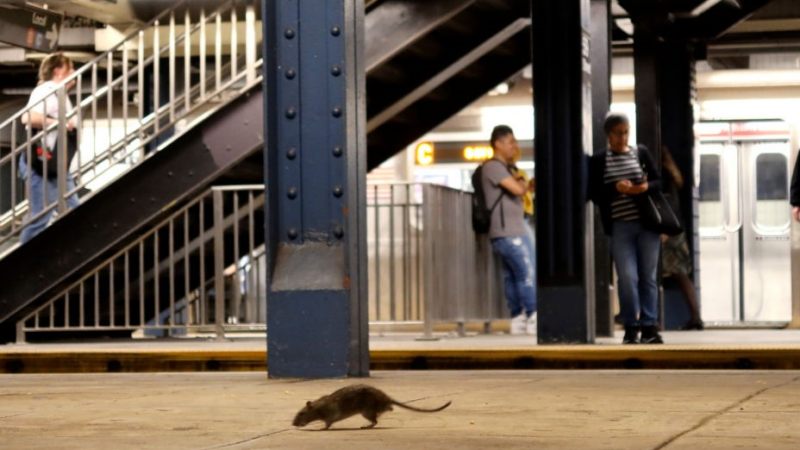Australia, a biodiversity hotspot, recognizes 750 new species
In Australia, unique species abound – from koalas and kangaroos to wombats and emus.
Now, the western laughing frog and a spider named for Tom Hardy are among the 750 new species recognized on the continent.
Melbourne-based wildlife ecologist Euan Ritchie says 750 new species may sound like a lot, but that number is just the tip of the iceberg.
“The reality is we think as much as 70% of Australia’s native species remain ‘to be described’,” Ritchie says.

There are already some 150,000 species on the Australian National Species List, which is the country’s authoritative list of plants, animals and other organisms.
The western laughing tree frog is the 248th species of frog identified in Australia.
“I think everyone loves the laughing frog, which basically has a call that sounds more like a laugh rather than what you might associate traditionally with a frog — more of a croak or ribbit,” Ritchie says.
Citizen scientists helped uncover the species, which though similar to another laughing tree frog, has a longer laugh and less distinct black and yellowish patterning.
Another new addition is the cracking-clay Pilbara Planigale, which resembles a mouse but is, in fact, a marsupial.
“The females have pouches, but they have these extraordinary, pointed, flat heads,” Ritchie says. “And that’s because they live between these cracks in the soil, literally.”
A new species of orb-weaving spider named after the Marvel character Venom — a shape-shifting alien in the Spider Man franchise — also made the list.
The species name, tomhardyi, is a nod to actor Tom Hardy, who plays Venom in the movie.
Many of the new species are invertebrates, like an iridescent marine worm named for famed biologist Sir David Attenborough, Marphysa davidattenboroughi.
But there are bigger things happening here than just identifying species and giving them funny names.
Ritchie says taxonomy — the science of describing what species are and categorizing them — is essential to conservation.
“It’s a little bit like having a library of really valuable books in a house,” Ritchie says. “If you don’t know what books are there, and then maybe there’s a threat to that house — maybe it’s a fire or something — you don’t even know what you’re going to lose. And you’re really in a bad position to conserve those books.”
It’s the same for species, Ritchie says.
“If we don’t know what species we have, where they’re found, we’re actually in a really bad position to manage and conserve those species.”
Ritchie says the work of research and conservation is particularly important now as climate change and habitat destruction threaten Australia’s biodiversity.
On Sept. 8, the Australian government announced 14 new projects, with $2 million in funding, to continue to name and classify native Australian species.
“We are pleased to invest in this critical taxonomy research to protect our vulnerable and threatened species,” says Tanya Plibersek, who serves as Australia’s Minister for the Environment and Water. “Otherwise we wouldn’t know that they exist or the threats they face.”
Majd Al-Waheidi edited this digital story.
Transcript:
LEILA FADEL, HOST:
Australia just recognized 750 new species.
MICHEL MARTIN, HOST:
Now to put this into perspective, there are already some 150,000 species on the Australian national species list that is the authoritative list of plants, animals, and other organisms on the continent.
FADEL: The reality is adding 750 more species may sound like a lot, but Melbourne-based wildlife ecologists Euan Ritchie says there’s so much more to discover.
EUAN RITCHIE: The reality is that we think as much as 70% of Australia’s 90 native species remain to be described.
MARTIN: One of the newly listed species is the Western laughing tree frog.
(SOUNDBITE OF FROG LAUGHING)
RITCHIE: So I think everyone loves the laughing frog, which basically has a call that sounds more like a laugh.
FADEL: Also new to the list is the cracking-clay Pilbara planigal – I know, super easy name to remember. Ritchie says it’s kind of – it kind of looks like a house mouse, but it’s a marsupial like a kangaroo or a koala.
RITCHIE: They have these extraordinary kind of pointed flat heads. And that’s because they live between these cracks in the soil literally.
MARTIN: Another creature getting a lot of attention is the orb weaving spider. It is named after the Marvel character Venom, a shapeshifting alien in the Spider Man franchise.
(SOUNDBITE OF FILM, “VENOM”)
TOM HARDY: (As Eddie) What the hell are you?
HARDY: (As Venom) We are Venom.
MARTIN: The species, named Tom Hardy I, is a nod to actor Tom Hardy, who plays Venom in the movie.
FADEL: It’s not just about finding new species and giving them funny names. Ritchie says taxonomy is essential to conservation. That’s the science of describing what species are and categorizing them.
RITCHIE: Little bit like having a library of really valuable books in a house. If you don’t know what books are there, and then maybe there’s a threat to that house, maybe it’s a fire or something, you don’t even know what you’re going to lose, and you’re really in a bad position to conserve those books and it’s the same for species.
MARTIN: Ritchie says this is particularly important work now. Climate change and habitat destruction are threatening Australia’s biodiversity.
FADEL: So knowing the laughing frog exists is a benefit to all.
(SOUNDBITE OF MUSIC)
Election officials on edge as voting begins. And, Haitians suffer from Trump’s claims
General election voting for 2024 is commencing as election officials worry about the threat level they face. And, the Haitian community is suffering from Trump's false claims that they eat pets.
A “golden age” of rat research may be here. What the often unwanted companions can teach us about us
Rat and human lives have long intersected, but there's little relatively little research about them. Thanks to advances in genomics and paleoarcheology mean a lot more study may be on the horizon.
2 former migrant farmworkers reflect on their journey together
Emma and Rogelio Torres reminisce about how unlikely a pairing they were when they first met as migrant farmworkers in Arizona. They met in the 80s near Yuma — with love the last thing on their minds.
Deadly high blood pressure during pregnancy is on the rise
More pregnant women are being diagnosed with dangerously high blood pressure, which risks the life of the parent and child. Montana is one of the states improving screening and treatment.
Voters are advised to return their ballots early because of mail delay concerns
Election officials are raising concerns about the U.S. Postal Service's ability to handle this fall’s expected influx of election mail. But USPS say it’s ready to deliver the country’s ballots.
Turkey wants to regulate Germany’s beloved döner kebab street food
Under Turkey's proposal, beef would be required to come from cattle that is at least 16 months old, and be marinated with specific amounts of fat, yogurt or milk, onion, salt, thyme, and pepper.





